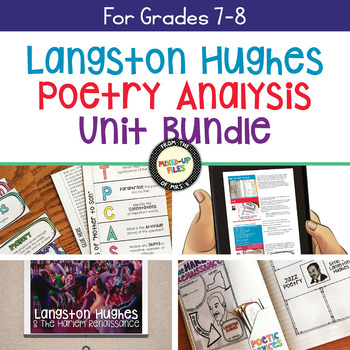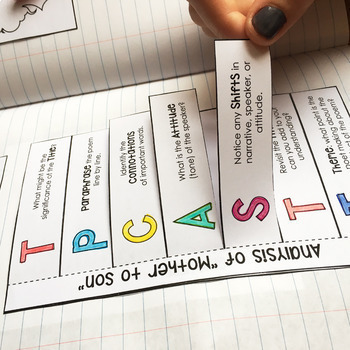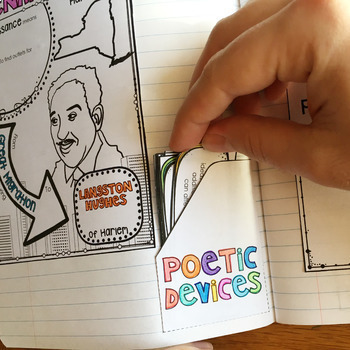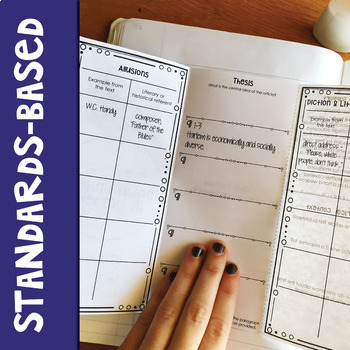Langston Hughes Harlem Renaissance Poetry Analysis Unit Bundle
- Zip
Products in this Bundle (5)
Description
Engage your middle school students in American poems of the Harlem Renaissance that resonate with current events. This poetry unit is based on the TPCASTT poetry analysis model: Title, Paraphrase, Connotations, Attitude (tone), Shift, Title revisited, and Theme. The lessons use guided close reading of Langston Hughes’s poems "The Negro Speaks of Rivers," "Dreams," "Mother to Son," and "Harlem" (Dream Deferred).
Product Features
- Engaging slideshow for each poem with critical thinking questions
- Interactive notebook that students complete throughout the slideshow
- Supporting texts include current videos and a nonfiction essay by Langston Hughes
- Thorough Teacher Guide with discussion notes and questions for each slide and interactive notebook tips and layout
Each lesson includes a Teacher Guide for the slideshow presentation and printable interactive notebook pieces. Project the slideshow on your whiteboard to guide students through the analysis of a poem, emphasizing two or three poetic devices, in addition to the TPCASTT model, as they add notes on foldable graphic organizers in their interactive notebooks. The unit culminates with a literary analysis essay of Langston Hughes' style.
Students will
- Consider the significance of the title
- Paraphrase the poem line by line
- Discuss connotations of important words
- Identify the speaker's tone
- Determine the theme of the poem
- Analyze the poet's use of allusion, assonance, extended metaphor, imagery, repetition, rhyme, simile, & vernacular, and their part in developing the theme
- Compare the development of theme in two poems
- Analyze the poet's style
Poetic devices taught in this unit include:
- Alliteration
- Assonance
- Connotation
- Extended metaphor
- Imagery
- Repetition
- Rhyme
- Simile
- Vernacular
Money-Saving Tips
Provide feedback after you use a resource; you can earn credits toward your next TPT purchase!
Follow me to be notified when a new resource is uploaded. My new resources are priced at 50% off for the first 48 hours, so it pays to follow me!
See More Resources Like This
See all my Interactive Notebook resources
See all my Close Reading Lessons from The Mixed-Up Files of Mrs. B





